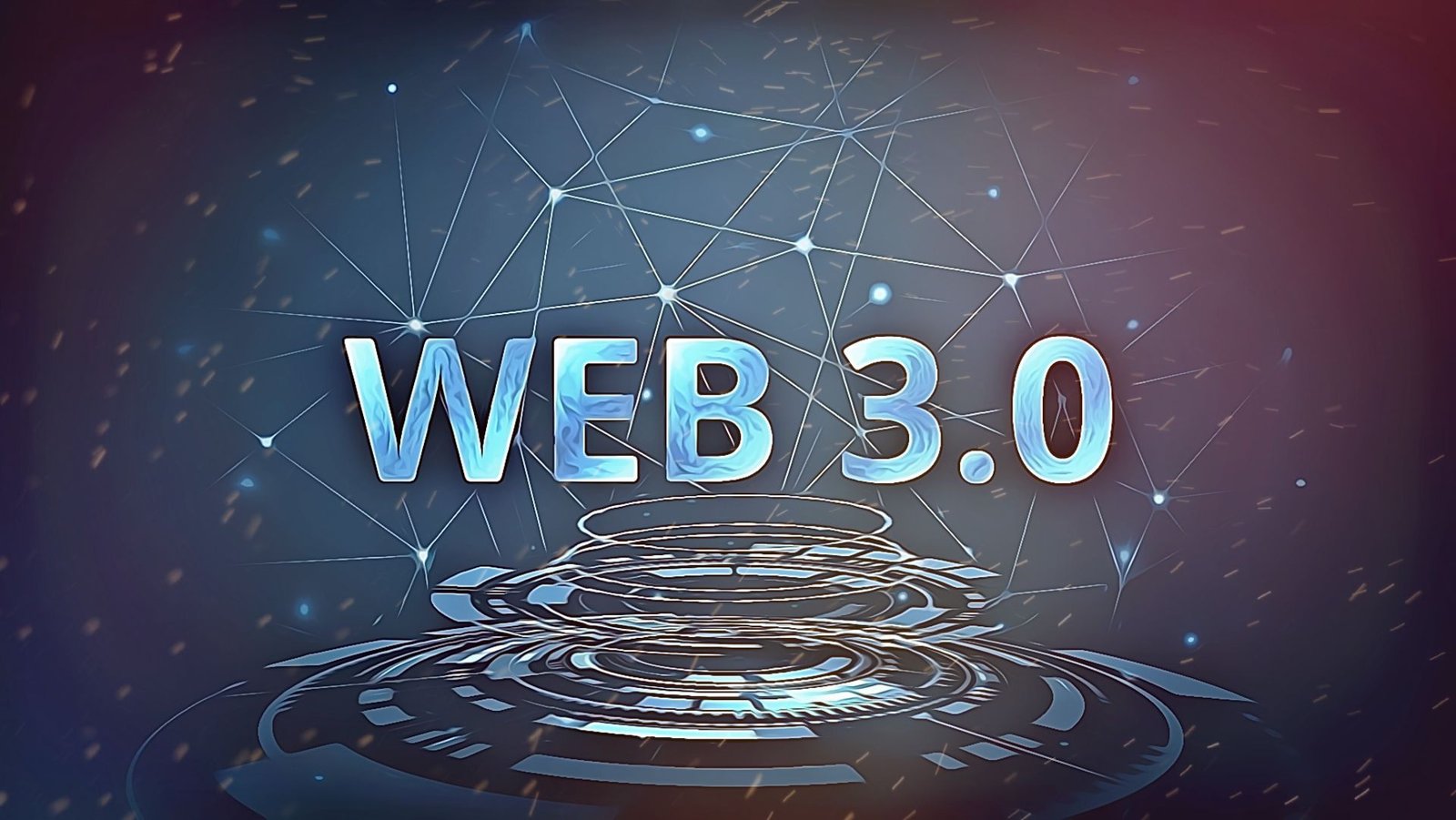Best Web3 Tokens to Invest in 2025 Complete Investment Guide

The Web3 revolution is reshaping the digital landscape, and savvy investors are seeking the best Web3 tokens to invest in for 2025. As blockchain technology matures and decentralized applications gain mainstream adoption, selecting the right tokens becomes crucial for building a profitable cryptocurrency portfolio. This comprehensive guide analyzes the most promising Web3 projects, their tokenomics, and growth potential, helping you make informed investment decisions in the rapidly evolving decentralized ecosystem.
With billions of dollars flowing into Web3 infrastructure, identifying tokens with strong fundamentals, innovative use cases, and experienced development teams has never been more critical. Whether you’re a seasoned crypto investor or just beginning your Web3 journey, understanding which tokens offer the best risk-reward ratio will be essential for maximizing your returns in 2025.
What Makes Web3 Tokens Worth Investing In?
Web3 tokens represent ownership stakes in decentralized protocols, applications, and ecosystems that power the next generation of the internet. Unlike traditional cryptocurrencies that primarily serve as digital currencies, Web3 tokens often provide governance rights, utility functions, and revenue-sharing mechanisms within their respective platforms.
The most promising Web3 tokens typically share several key characteristics. They solve real-world problems through innovative blockchain solutions, have strong development teams with proven track records, and demonstrate clear paths to adoption and revenue generation. Additionally, successful Web3 tokens often feature deflationary tokenomics, strategic partnerships with major corporations, and active community engagement that drives ecosystem growth.
When evaluating Web3 investments, savvy investors analyze factors including total addressable market size, competitive advantages, token utility, and the team’s ability to execute their roadmap. Projects with multiple revenue streams, cross-chain compatibility, and sustainable economic models tend to outperform those with limited use cases or unclear value propositions.
Top Categories of Best Web3 Tokens to Invest in 2025

Decentralized Finance (DeFi) Protocols
DeFi tokens continue to dominate the Web3 landscape by providing innovative financial services that eliminate the need for traditional intermediaries. Leading DeFi protocols enable users to lend, borrow, trade, and earn yield on their cryptocurrency holdings by utilizing smart contracts and automated market makers.
Uniswap (UNI) remains a cornerstone of decentralized exchange infrastructure, processing billions of dollars in trading volume monthly. The protocol’s continuous innovation in automated market making, combined with upcoming version releases, positions UNI as a substantial long-term investment for Web3 portfolios.
Aave (AAVE) has established itself as the premier decentralized lending protocol, allowing users to earn interest on deposits and borrow against collateral. With its expansion into multiple blockchain networks and growing institutional adoption, AAVE demonstrates the revenue potential of Web3 infrastructure tokens.
Compound (COMP) pioneered algorithmic money markets and continues to innovate in decentralized finance, specifically in lending. The protocol’s governance token provides voting rights on interest rate models and collateral types, making COMP holders direct stakeholders in the platform’s evolution.
Layer 1 Blockchain Networks
Next-generation blockchain platforms offer scalability, security, and developer-friendly environments that attract Web3 applications and users. These Layer 1 networks compete on transaction speed, cost efficiency, and ecosystem development to capture market share from Ethereum.
Solana (SOL) has gained significant traction due to its high-performance blockchain, which can process thousands of transactions per second at low costs. The network’s growing ecosystem of DeFi protocols, NFT marketplaces, and Web3 applications makes SOL an attractive investment for 2025.
Avalanche (AVAX) offers a highly scalable platform with a subnet architecture that enables the creation of custom blockchains. The network’s focus on enterprise adoption and sustainable consensus mechanisms positions AVAX as a strong contender in the Layer 1 competition.
Polygon (MATIC) serves as Ethereum’s leading scaling solution, offering faster and cheaper transactions while maintaining compatibility with Ethereum’s ecosystem. As Ethereum adoption grows, MATIC benefits from increased demand for Layer 2 scaling solutions.
Metaverse and Gaming Tokens
The convergence of blockchain technology, virtual reality, and gaming creates massive opportunities for Web3 tokens that power digital worlds and in-game economies. These tokens enable the actual ownership of digital assets, incorporate play-to-earn mechanics, and facilitate cross-platform interoperability.
The Sandbox (SAND) has established a leading position in blockchain-based virtual worlds, allowing users to create, own, and monetize gaming experiences. Major brand partnerships and land sales generate significant value for SAND token holders.
Axie Infinity (AXS) pioneered the play-to-earn gaming model and continues to evolve its ecosystem with new game modes and economic mechanisms. The token’s utility in governance, staking, and in-game transactions creates multiple value accrual mechanisms.
Immutable X (IMX) provides scalable solutions specifically designed for NFT trading and blockchain gaming. As the gaming industry adopts Web3 technologies, IMX’s specialized infrastructure positions it for significant growth.
Emerging Web3 Sectors Showing Investment Potential
Decentralized Identity and Privacy
Privacy-focused Web3 tokens address growing concerns about data ownership and digital identity management. These projects enable users to control their personal information while participating in decentralized applications and services.
Civic (CVC) provides identity verification services that safeguard user privacy while ensuring compliance with regulatory requirements. The growing need for decentralized identity solutions in Web3 applications drives demand for CVC tokens.
Ocean Protocol (OCEAN) creates data marketplaces that allow individuals and organizations to monetize their data while maintaining privacy controls. As data becomes increasingly valuable, OCEAN’s infrastructure could capture a significant market share.
Cross-Chain Infrastructure
Interoperability solutions enable different blockchain networks to communicate and exchange value, addressing one of Web3’s most significant challenges—these solutions power bridges, relayers, and cross-chain applications that connect isolated blockchain ecosystems.
Chainlink (LINK) provides essential oracle services that connect smart contracts with real-world data, making it indispensable for decentralized finance (DeFi) and Web3 applications. The network’s expanding service offerings and partnerships strengthen LINK’s investment thesis.
Polkadot (DOT) enables blockchain interoperability through its parachain architecture, allowing specialized blockchains to share security and communicate seamlessly. DOT’s role in the multi-chain future makes it a compelling long-term investment.
Also Read: Best Crypto Tokens with Recent All-Time Highs Despite Minor Dip
Decentralized Storage and Computing
Web3 applications require censorship-resistant storage and computing resources that traditional cloud providers cannot guarantee. Tokens that incentivize the provision of decentralized infrastructure address this critical need while creating new revenue opportunities.
Filecoin (FIL) operates the largest decentralized storage network, enabling users to store data across a global network of distributed nodes. As Web3 applications generate more data, the demand for decentralized storage solutions is expected to increase, potentially driving FIL’s value.
Render Network (RNDR) provides distributed GPU computing for 3D rendering and AI workloads, addressing the growing demand for computational resources in the metaverse and machine learning applications.
Investment Strategies for Web3 Tokens in 2025
Portfolio Diversification Approach
Building a balanced Web3 portfolio requires exposure to different sectors and risk levels. Allocating investments across established protocols, emerging platforms, and speculative projects helps optimize risk-adjusted returns while capturing various growth opportunities. Conservative investors may focus 60-70% of their Web3 allocation on established tokens, such as Ethereum, Solana, and major DeFi protocols. The remaining 30-40% can target emerging sectors, such as metaverse gaming, decentralized identity, and cross-chain infrastructure, for higher growth potential.
Aggressive investors might increase exposure to smaller-cap tokens and early-stage projects while maintaining core positions in proven protocols. This approach offers higher return potential but requires more active management and risk tolerance.
Dollar-Cost Averaging Strategy
Given the volatility of Web3 tokens, dollar-cost averaging helps smooth out price fluctuations while building positions over time. This strategy involves making regular purchases regardless of token prices, reducing the impact of market timing on overall returns. Weekly or monthly purchases of target Web3 tokens can help investors avoid emotional decision-making and benefit from the long-term growth of the ecosystem. This approach works particularly well for tokens with strong fundamentals and clear adoption trends.
Staking and Yield Generation
Many Web3 tokens offer staking rewards or yield generation opportunities that compound investment returns, providing additional benefits. Participating in protocol governance through token staking often provides additional income while supporting network security and decentralization. Research staking requirements, lock-up periods, and reward rates before committing tokens to staking programs. Some protocols offer liquid staking options that maintain token liquidity while earning rewards.
Risk Management for Web3 Token Investments

Technical and Smart Contract Risks
Web3 protocols face technical risks, including smart contract vulnerabilities, network congestion, and failures in consensus mechanisms. Thorough due diligence on protocol security audits, development practices, and incident response helps identify potential technical issues that may arise. Investing in tokens with multiple security audits, bug bounty programs, and proven track records reduces smart contract risk. Diversifying across different blockchain networks also limits exposure to platform-specific technical problems.
Regulatory and Compliance Considerations
The regulatory landscape for Web3 tokens is continually evolving as governments worldwide develop frameworks for cryptocurrencies and digital assets. Staying informed about regulatory developments and their potential impact on token values is crucial for investment planning. Tokens with clear utility functions and decentralized governance structures may face less regulatory scrutiny than those resembling traditional securities. However, regulatory uncertainty remains a significant risk factor for all Web3 investments.
Market Volatility and Liquidity
Web3 tokens often experience high volatility due to market sentiment, protocol developments, and broader cryptocurrency trends. Understanding liquidity profiles and trading volumes helps assess the ability to enter and exit positions efficiently. Lower-cap tokens may offer higher growth potential but typically have less liquidity and higher volatility than established protocols. Position sizing should account for these risk factors to avoid excessive portfolio concentration.
Future Outlook for Web3 Token Investments
Institutional Adoption Trends
Major corporations and financial institutions are increasingly exploring Web3 technologies and tokenized assets. This institutional adoption provides legitimacy and capital inflows that support long-term appreciation of the token’s value. The adoption of enterprise blockchain, central bank digital currencies, and tokenized real-world assets creates new demand sources for Web3 infrastructure tokens. Protocols that capture this institutional demand may outperform those focused solely on retail users.
Technology Development Milestones
Upcoming technological improvements, including Ethereum 2.0 upgrades, cross-chain protocols, and scalability solutions, will significantly impact Web3 token valuations. Projects that successfully implement these technologies may gain a competitive advantage and increase their market share. AI integration, quantum-resistant cryptography, and improved user experience interfaces represent additional innovation areas that could drive Web3 adoption and token demand. Investing in projects at the forefront of these developments offers potential alpha generation opportunities.
Conclusion
Identifying the best Web3 tokens to invest in 2025 requires thorough research, risk management, and strategic portfolio construction. The tokens and strategies outlined in this guide provide a foundation for building a diversified Web3 investment portfolio that captures the sector’s growth potential while managing downside risks.
Success in Web3 investing stems from understanding the technology, evaluating the team’s execution capabilities, and maintaining discipline during market volatility. Start with established protocols, gradually add exposure to emerging sectors, and continuously invest within your risk tolerance limits.
